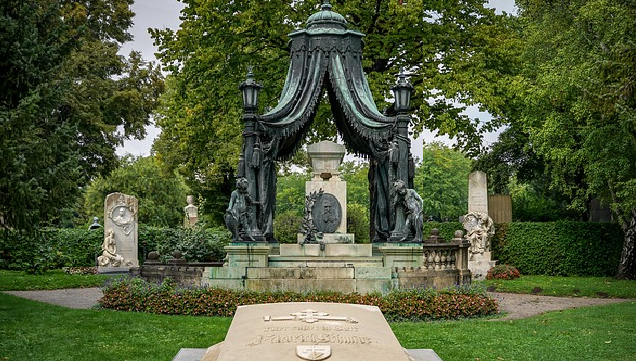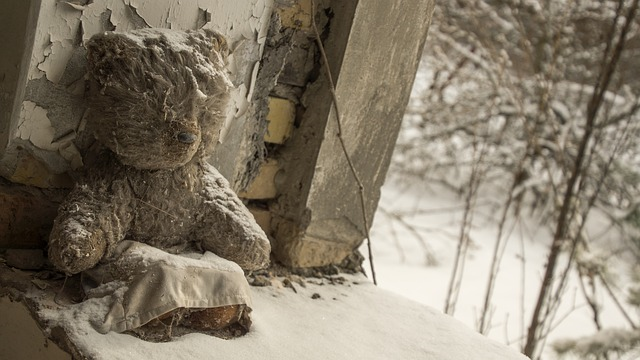In the 21st century, travel doesn’t mean sunny beaches or cold mountains anymore. It is evolving with different forms that are intriguing and adventurous at the same time, like Dark tourism. However, it was a debatable idea from the beginning. It became known as a tourism output from the early 90s.
The dark destinations can be strange or frightening places. They don’t offer the “aesthetic appeal” like the touristy places people like to see on their vacation. That’s why, dark tourism is picking up as a global travel trend as its sites are identified with tragedy, suffering, death, and destruction.
Here are some exciting features about Dark Tourism that will give you an insight into why you should pursue it!

1. Dark Tourism helps to form Intellect for a place
Dark Tourism generates interest in the area, which inspires dark tourists to see it in real. Furthermore, it makes them more interested in obtaining knowledge about specific historical periods. It also helps travellers to feel the gravity of sadness when they know about a tragic past. Finally, it creates gratitude and humility about the sad event.
Also, some people may want to pay tribute to people who were affected by the grief event. It also gives the maturity to respect the thin line between appreciating history and exploiting the dead. In all, it will have an impact on the traveller’s psyche.
For example, Yad Vashem is a memorial of each of the six million Jews who lost their lives worldwide during the Holocaust. There is a section for the scientific study for Holocaust and genocide in the complex. The research institute has archives, a library, a publishing house, an educational centre, and the International School for Holocaust Studies.
History professors from European countries conduct seminars to raise awareness about contemporary anti-Semitism, xenophobia, and all forms of hatred. It is followed by a visit to the memorial complex, consisting of the Historical Museum, Hall of Remembrance, Museum of Art Holocaust, the visual centres, Education Centres, Archives, Research Department, Multimedia Center, and Synagogue.
Also Read: Everything about Dark Tourism | Concept, Types, Examples
2. Dark Tourism creates awareness about Social responsibility
Why do we need to know the tragic history of world war one or two, battleships, colonization, nuclear disasters, etc.? Simply because history gives a lesson and teaches us a sense of responsibility.
Dark tourism holds valuable lessons for everyone. Anyone witnessing a tragic historical site, their memory gets imprint with sensitivity. Also, when people travel to a site known for actual death or symbolic encounters is known as Thanatourism.
Any site that has witnessed mass killings, genocide, or terrorism invokes sorrow and anger. Knowing about the history and the events leading to destruction gives teachings and makes the person more socially responsible. Whether it be Toul Sleng Genocide Museum or the Ground Zero Memorial, people visualize a vision of panic and anxiety.
3. Dark Tourism’s Economic Efficacy
People nowadays are getting bore with scenic beauty and like to discover a place with a story. There is a gradual shift in tourist behaviour where they want to feel feelings rather than visiting trendy destinations. They are resonating with a dark site which gives them experience. That’s why in the coming years, Dark Tourism has immense potential to make the horrors of past years into the viable business of today.
If we take up the example of India, it has a long history of rulers, rich culture, heritage, and diversity. Therefore, there are all types of dark sites, and they can gather all the tourist’s attention worldwide. Moreover, it will help bring in foreign exchange to the country. But still, India has an orthodox outlook towards dark tourism, which is changing slowly. It lacks investments in marketing, branding, or building up the tourism infrastructure around the area. Also, it’s important for the concerned authority to understand the correct representation of sites, moral issues, and visitor motivations to make it a successful travel model.
4. Dark Tourism promotes the conservation of culture and heritage
Dark tourism intersects with heritage and culture. The notion behind dark sites is to conserve and memorialize significant happenings to aware people. It promotes the conservation of places that speak about tragic events visually.
Dark sites allow experiencing and tangibly embracing the historic dark stories. Like, touching, exploring, reading, and having an enriched experience during their travel. Therefore, it is a more practical and exciting way to obtain history lessons.
For example, people from different nations visit Auschwitz concentration camps because of their inhuman history. During the world war, many people from all over Europe got deported to this labour camp. Prisoners faced mass killings, inhuman treatment, starvation and much more. Approximately 90% of people were Jews. It is estimated around 1.1 to 1.5 million lives were lost during the Nazi rule. As a famous dark tourist spot, it is possible to freely access the whole complex, including the insides of the huts where the prisoners were kept. Also, when an individual visits a holocaust site is known as Atrocity Tourism.

5. Dark Tourism helps to understand the Geopolitics
In the era of globalization, we have witnessed various pros and cons in different aspects. One of them is the formation of geopolitics. The dark sites can also help us gather exciting points on this topic.
For example, during World War II, China’s civil war involved Russia and America, which were communist and nationalists. Both of them were the world’s most powerful nations at the time. The development of the problems between these two nations was because of political competition and power. It helps people develop a deeper understanding of the geopolitical situations in the past that led to destruction.
Also Read: Dark Tourism Explained: What, why and where
6. Dark Tourism makes room for unconventional conversations
There are subcategories of Dark tourist sites like- Grave, Holocaust, Prison killings, Genocide, Battlefield, nuclear reaction, natural disaster affected areas, or places left abandon due to haunting. These categories hold different stories but tied together with a sense of loss.
This topic provokes conversation of different viewpoints and allows each opinion to breathe. For example, each person might hold a different opinion about grave tourism, political views during historical events, or the battlefield’s aftermath. Usually, people don’t voice out these opinions easily. But, when discussing events relating to dark sites, they delve deeper into the subject. Hence, this brings more perspectives to the light.
Conclusion
To sum up, Dark tourism is creating a rage for a reason. It influences contemporary tourists to live unique, impactful, and maybe extreme experiences. It attracts people interested in history, has a curious mind, and wants to do more than visit a place. Every site has a story to tell that can teach important lessons. Like Ground Zero, killing Fields in Cambodia, Fukushima, Chernobyl, or Auschwitz.
Related